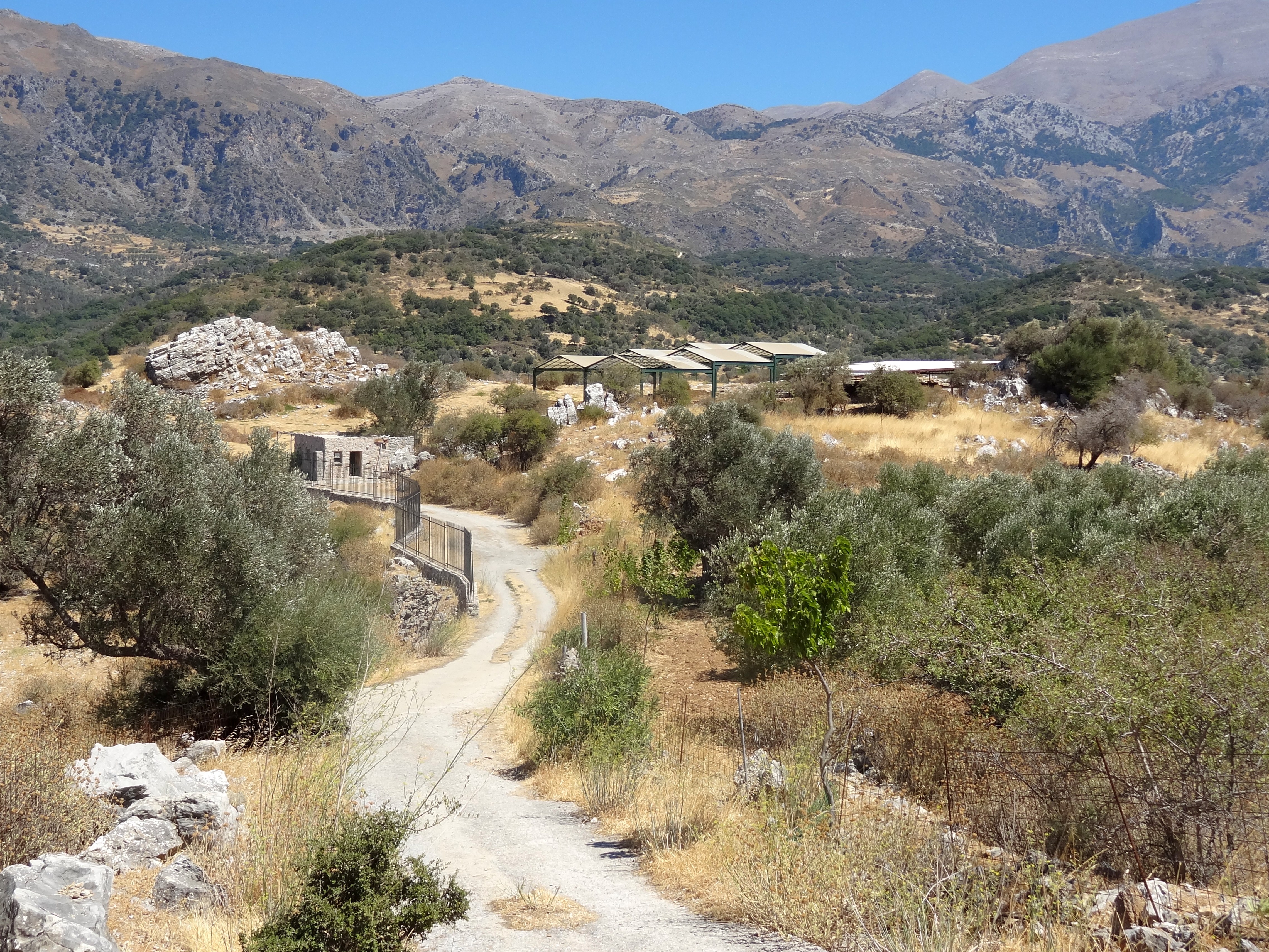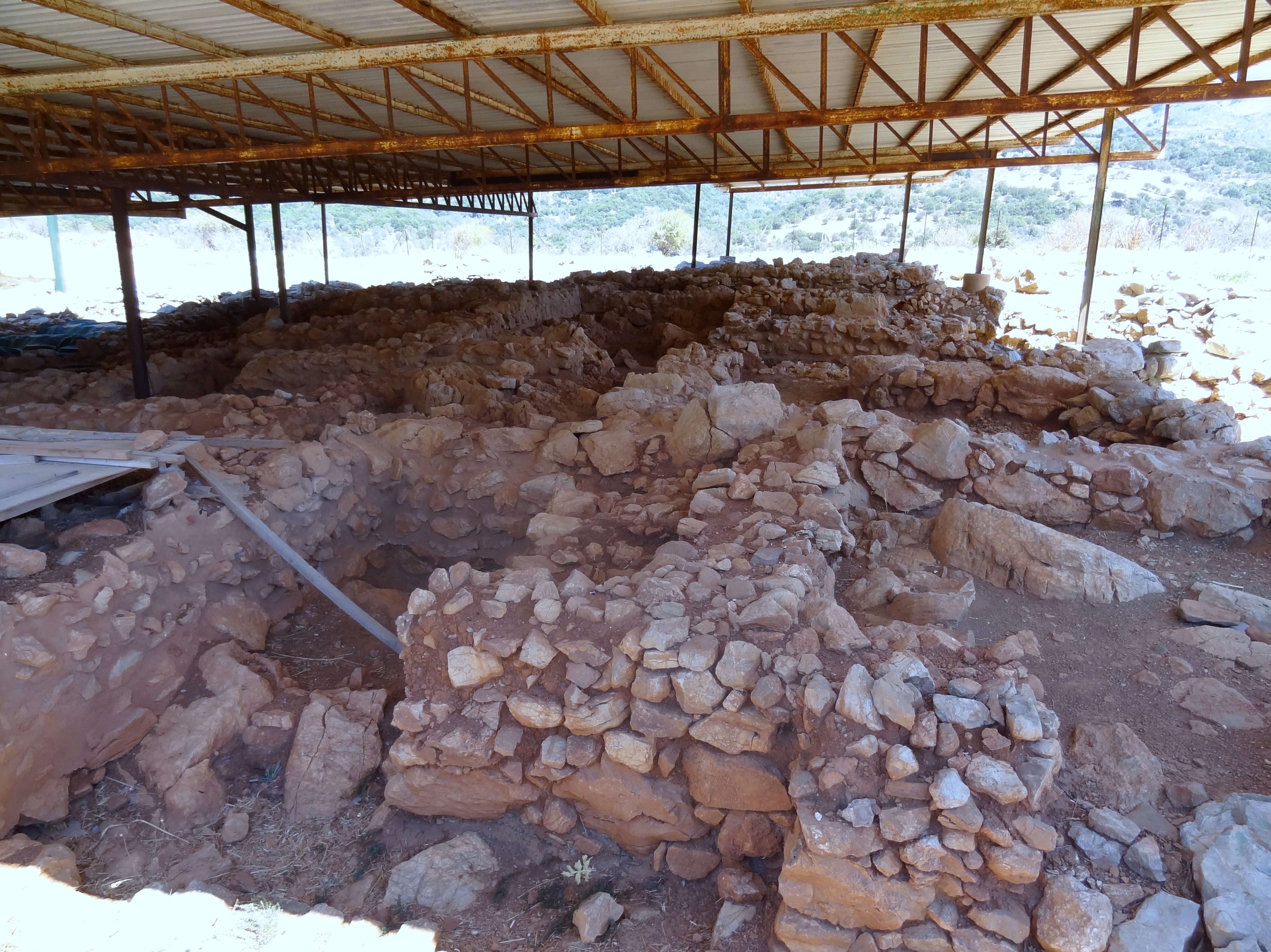Monastiraki, Crete on:
[Wikipedia]
[Google]
[Amazon]
 Monastiraki is the
Monastiraki is the
 Monastiraki was first excavated during
Monastiraki was first excavated during
C.Michael Hogan, ''Phaistos Fieldnotes'', The Modern Antiquarian (2007)
 Monastiraki is the
Monastiraki is the archaeological
Archaeology or archeology is the scientific study of human activity through the recovery and analysis of material culture. The archaeological record consists of artifacts, architecture, biofacts or ecofacts, sites, and cultural landscap ...
site of an ancient Minoan
The Minoan civilization was a Bronze Age Aegean civilization on the island of Crete and other Aegean Islands, whose earliest beginnings were from 3500BC, with the complex urban civilization beginning around 2000BC, and then declining from 1450B ...
town on the island of Crete
Crete ( el, Κρήτη, translit=, Modern: , Ancient: ) is the largest and most populous of the Greek islands, the 88th largest island in the world and the fifth largest island in the Mediterranean Sea, after Sicily, Sardinia, Cyprus, and ...
. The site is on the plain of Amari, west of the Ida
Ida or IDA may refer to:
Astronomy
* Ida Facula, a mountain on Amalthea, a moon of Jupiter
*243 Ida, an asteroid
*International Docking Adapter, a docking adapter for the International Space Station
Computing
*Intel Dynamic Acceleration, a techn ...
massif
In geology, a massif ( or ) is a section of a planet's crust that is demarcated by faults or flexures. In the movement of the crust, a massif tends to retain its internal structure while being displaced as a whole. The term also refers to a ...
. Monastiraki is from Rethymnon
Rethymno ( el, Ρέθυμνο, , also ''Rethimno'', ''Rethymnon'', ''Réthymnon'', and ''Rhíthymnos'') is a city in Greece on the island of Crete. It is the capital of Rethymno regional unit, and has a population of more than 30,000 inhabitants ( ...
.
Monastiraki likely dates to the Middle Minoan
The Minoan civilization was a Bronze Age Aegean civilization on the island of Crete and other Aegean Islands, whose earliest beginnings were from 3500BC, with the complex urban civilization beginning around 2000BC, and then declining from 1450B ...
Old Palace period and was destroyed at the same time as the old palaces. Its importance for archaeology, then, lies in the fact that it was not subsequently built on and remains one of the best examples of Middle Minoan archaeology on the island. It is clearly located on a strategically important site, dominating the Amari Valley The Amari Valley is a fertile valley on the foothills of Mount Ida and Mount Kedros in Crete. The valley was known as a center of resistance to the Germans during the Battle of Crete and the German occupation. After the abduction of General Heinrich ...
which connects the south coast of Crete to the west of Phaistos with the north coast of Crete at present day Rethymno. It is quite likely that Monastiraki was developed by Phaistos inhabitants founding a satellite center. (Hogan, 2007)
The site may have been a palace, and has thus far yielded a complex of buildings, including storehouses, two archive rooms of earthenware stamps and sanctuaries.
Archaeology
 Monastiraki was first excavated during
Monastiraki was first excavated during World War II
World War II or the Second World War, often abbreviated as WWII or WW2, was a world war that lasted from 1939 to 1945. It involved the vast majority of the world's countries—including all of the great powers—forming two opposin ...
by the German Archaeological Institute
The German Archaeological Institute (german: Deutsches Archäologisches Institut, ''DAI'') is a research institute in the field of archaeology (and other related fields). The DAI is a "federal agency" under the Federal Foreign Office of Germany ...
. Excavations began again in 1980 by the University of Crete
The University of Crete (UoC; Greek: Πανεπιστήμιο Κρήτης) is a multi-disciplinary, research-oriented institution in Crete, Greece, located in the cities of Rethymno (official seat) and Heraklion, and one of the country's most aca ...
. Three areas have now been excavated. In the early 1980s an Italian team excavated a small area at the north end of the site where the first store of seals was found. Nearby is the area that was illegally excavated by the Germans during the Second World War. Their excavation was based on the notebooks of the noted British archaeologist J. D. S. Pendlebury, who was captured and executed by the Germans after the Battle of Crete. The Germans concluded that Monastiraki was a small site and their excavations were not extensive. Greek archaeologists have recently revisited the German excavations with some interesting results.
The main part of the excavation lies to the south of these two areas and is under the supervision of Greek archaeologist Athanasia Kanda. There is not very much published in the public domain, and photography is still forbidden at the site, a ruling enforced by the local villagers who allow visitors onto the site.
As at August/2022, there is an "Entrance Kiosk" for the issue of Entrance Tickets" at a cost of 2 Euros per person, with a one page 'guide' sheet available, in a selection of languages. The lady "guardian" was *delighted* to see Visitors. We were perhaps the only 'foreigners' she had seen all week / month ...
See also
*List of ancient Greek cities
A ''list'' is any set of items in a row. List or lists may also refer to:
People
* List (surname)
Organizations
* List College, an undergraduate division of the Jewish Theological Seminary of America
* SC Germania List, German rugby union ...
References
* Willetts, R.E. 1977 ''The Civilization of Ancient Crete''C.Michael Hogan, ''Phaistos Fieldnotes'', The Modern Antiquarian (2007)
External links
* http://www.minoancrete.com/monastiraki.htm Minoan sites in Crete Populated places in ancient Greece Populated places in Rethymno (regional unit) {{AncientCrete-geo-stub